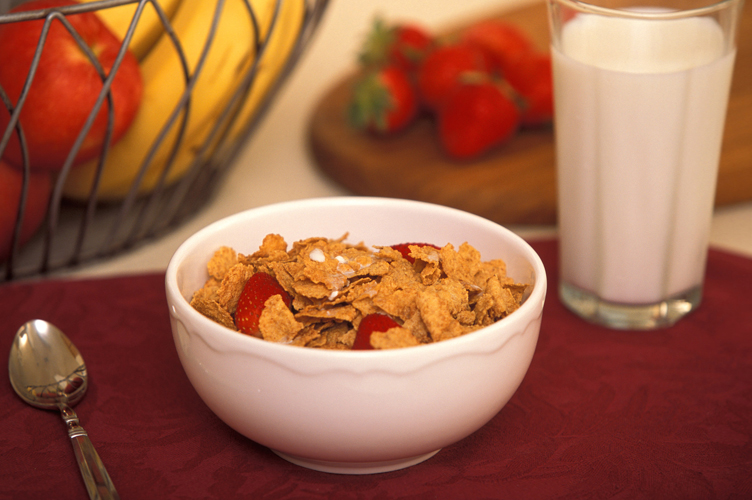
It's not the first time, nor will it be the last, that the dreaded crawly things appeared in my food. At first I thought it was a chance occurrence; then they appeared again. I had a problem. I had kitchen pests, specifically grain weevils. Adults cringe when they find insects in their food; kids say "gross", "cool" or "may I eat one?" In truth, eating them will not harm you. Eating insects is trendy and common in some parts of the world. They provide protein and crunch. However, like most people, I do not want them in my food or pantry!
Pantry pests are not uncommon and they are not a reflection of anyone's housekeeping skills. These insects lay their eggs on/in grains and given the right time and conditions they hatch, eat the food and grow, become adults, mate and lay more eggs. Some of the adults fly and some of the larvae spin cocoons to pupate. They get into food anywhere along the food chain – during growth, harvest, or storage in the warehouse, store or your home. Many hide in packaging, chew through plastic bags and wrapping, and seek cover in the crevasses of shelves and walls. Start with a few and soon everything is infested. Removing infected food, packaging and cleaning is essential to eradication.
I started by reading several Extension publications and then began my all-day project. It took me a long time because (a) I keep a lot of food in my closet pantry (I'm ready for any emergency - culinary, storm or natural disaster) and (b) I should have inspected everything after I saw the first bugs! Below are my "lessons learned" for protecting food from pests and getting rid of them if and when you find them.
✔ Start early in the day; it may take a while. Play your favorite music. Get someone to help you.
✔ Gather supplies: garbage bags, vacuum, cleaning solution & cloth (I used an all-purpose household cleaner), plastic or glass food storage containers, scissors, freezer weight plastic bags (quart, gallon and 2-gallon size), markers or China marker (a waxy pencil) and/or masking tape to label repackaged food.
✔ You will need to empty the entire closet or cabinet and perhaps adjacent cabinets.
✔ Jarred and canned food should not be a problem. However, it's a good time to check food expiration dates and wipe off any dust. If labels are loose, make sure you don't see any insects. If you do, remove the label (discard after noting needed information), wash the can, then label and date with a permanent marker.
✔ Inspect every paper or cardboard package. Any with noticeable insects go straight into the garbage bag. Keep it closed to prevent insect escape.
✔ Open all paper and cardboard packages and inspect. Even if the food appears insect free (there may be eggs in the packaging ready to hatch), discard the outer cardboard package keeping any needed directions and information. I cut off the directions and ingredient information, put it in a plastic bag and attached it to the container or put it in the container. Put the food in a glass or plastic food container, label and date the product. Insects can chew through plastic bags, even freezer weight ones. If you use bags, double bag.
✔ One method to kill larvae and adults is to put the food in the freezer for 3 or 4 days at 0°F. I did this with some of my food. Note, dead insect bodies will remain, so inspect after freezing.
✔ Remove any shelf covering and discard. After the pantry or cabinet is empty, vacuum everywhere (then immediately discard the bag in the outside trash), then wash everything. Let it dry. I skipped the shelf paper until I was sure all pests were gone. While sprays and traps are available, thorough cleaning is generally enough.
✔ Discard all trash outside.
✔ Now you may return food to the shelves. It is a great time to organize and group like items. An inventory is a good tool if you will keep it up. (It doesn't work for me.)
✔ Inspect the food again prior to use. Trust me; I learned the hard way not to pour pudding mix into the milk without prior inspection. Pasta deserves an extra look before cooking and as it starts boiling. Pests float.
✔ It's possible that you won't get all the pests the first time. I would continue to use glass or plastic containers for all grain and flour products for at least a few months before putting this food on the shelves in its original packaging. You may also use containers for ongoing prevention.
After you're done, admire your newly cleaned and organized space. Now pour your favorite beverage and sit down with your feet up, you deserve it!
Choosing food storage containers:
Use what you have such as glass or plastic jars, plastic containers, coffee cans or metal tins. If you purchase new containers, choose:
- Sizes and shapes to match the foods you store. Specialty containers for cereal and spaghetti are available.
- Clear sides to see the contents
- Tight fitting, easy to open lids
- Stackable. Beware different brands rarely stack well with the other.
- Easy to clean
Extension resources for more information:
- Pantry Pests, FS1149, Rutgers Cooperative Extension
- Insects in Your Food and Pantry, Nebraska Extension

